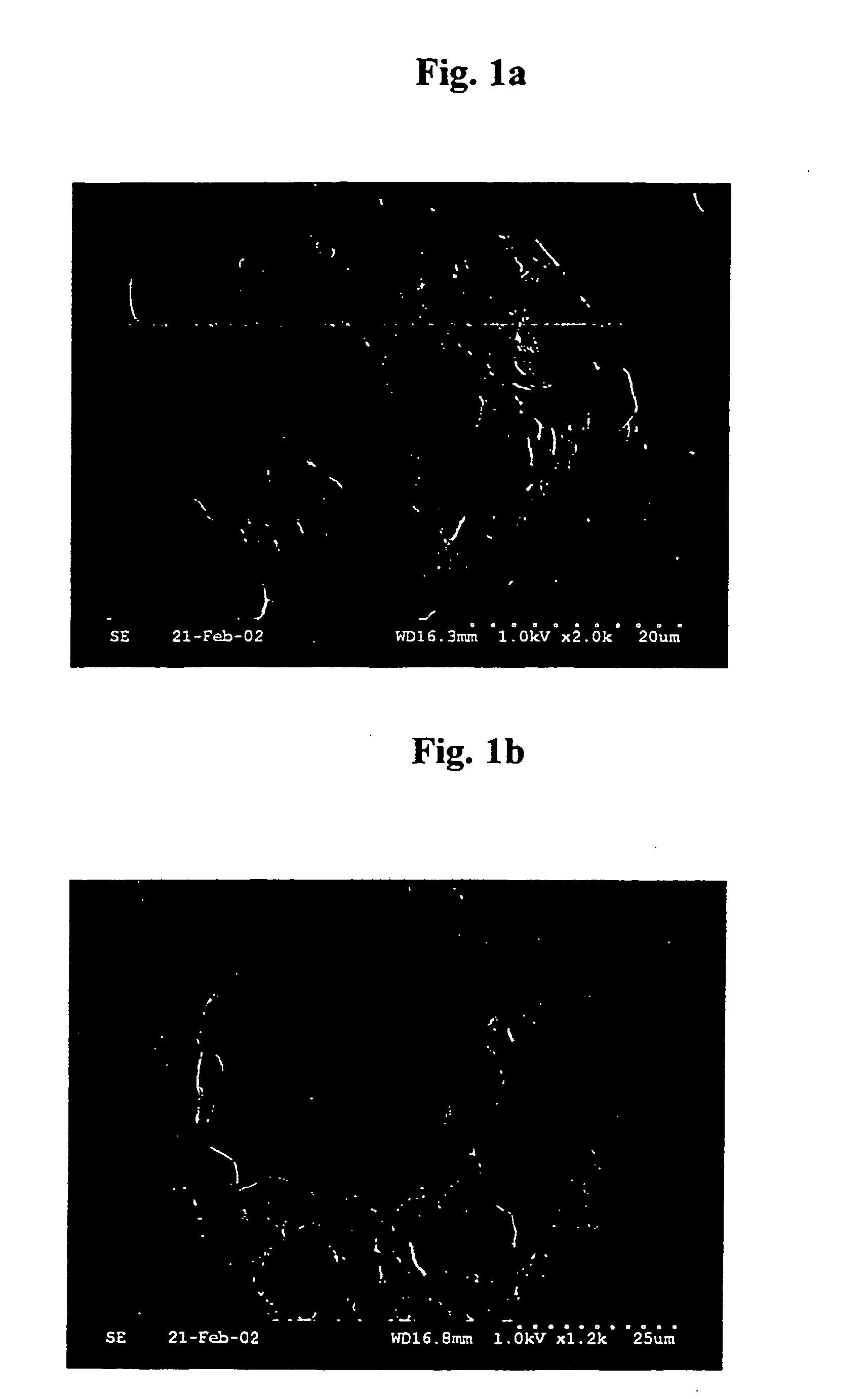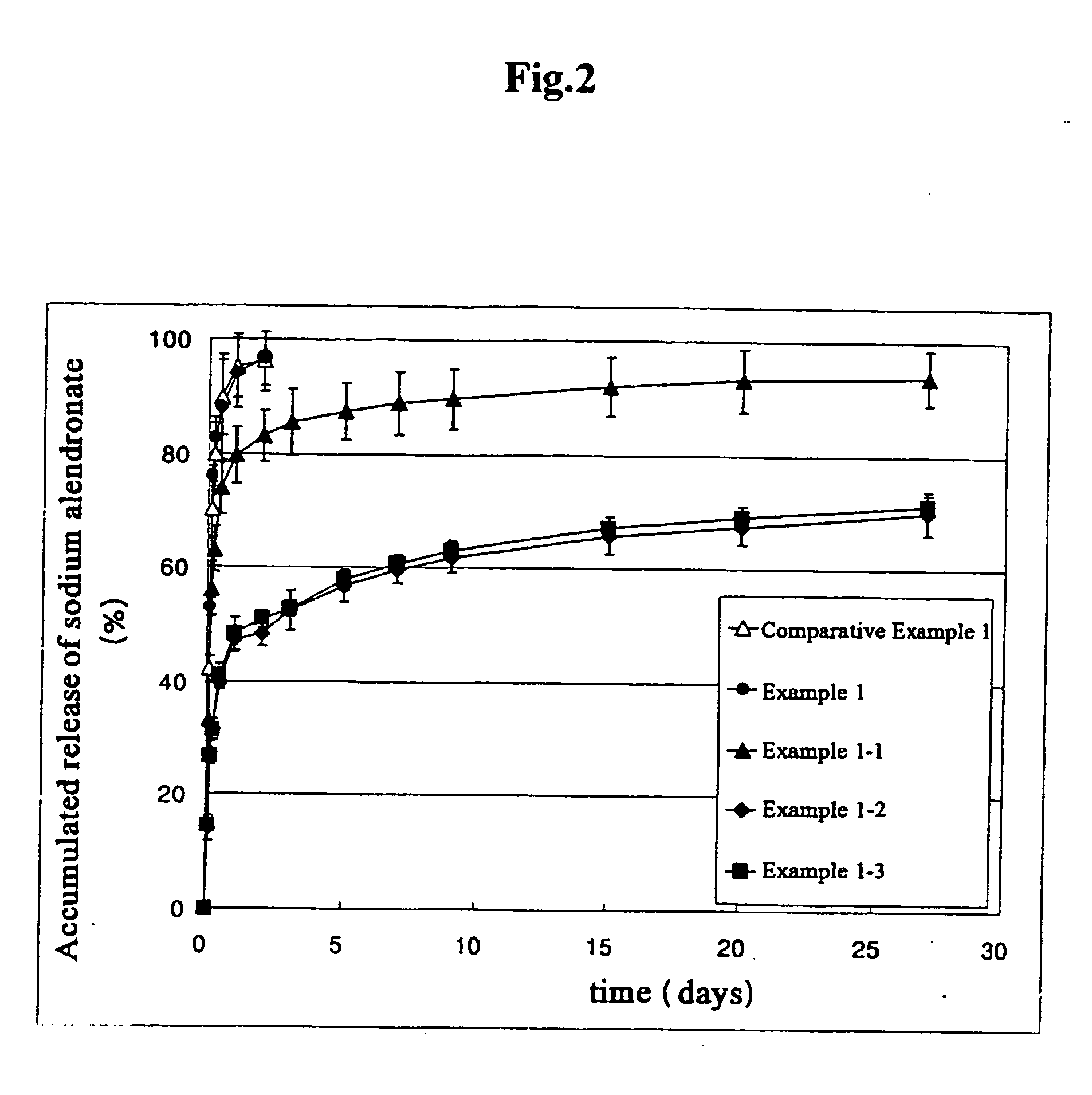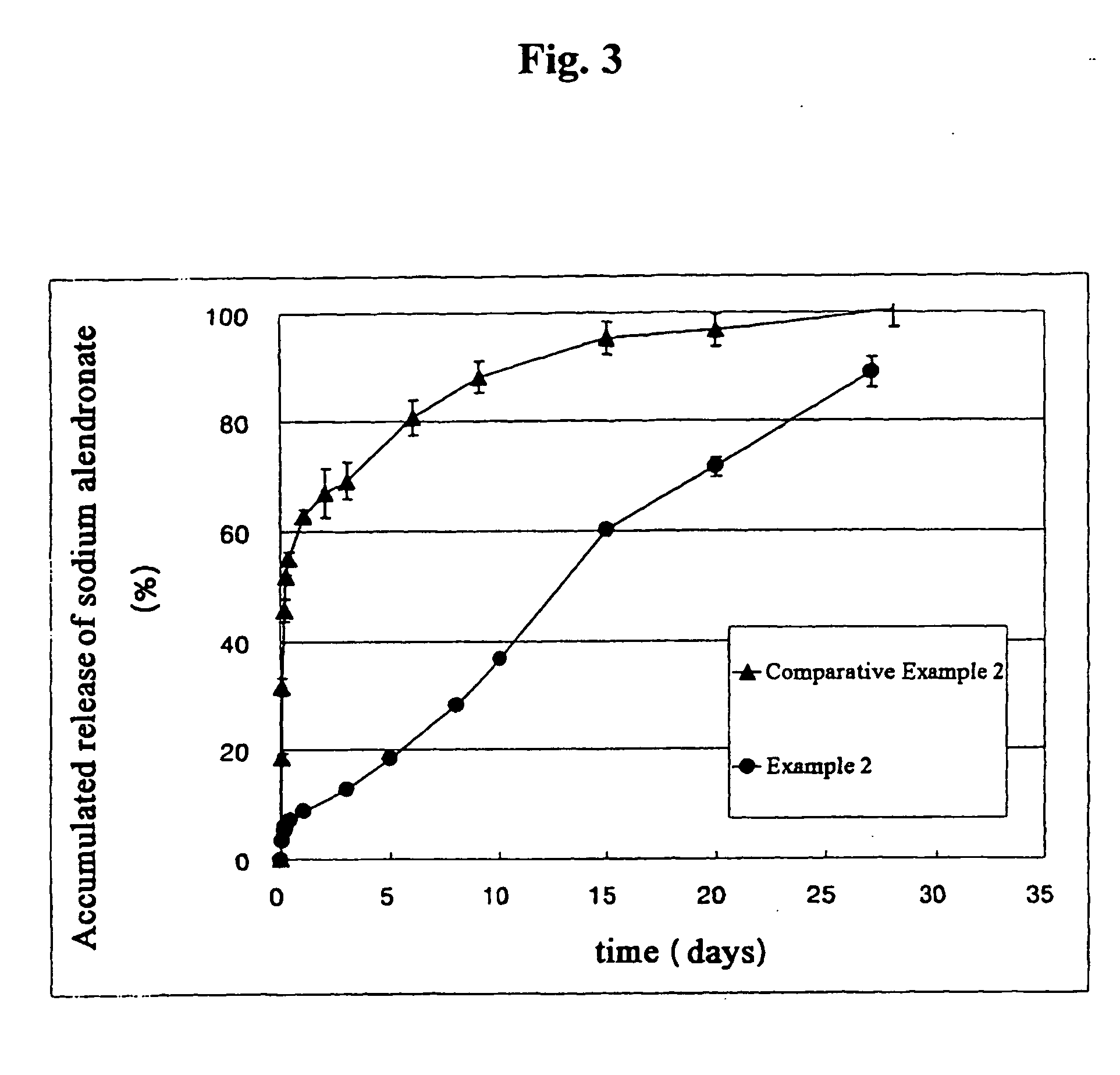Polymeric microparticulates for sustained release of drug and their preparation methods
- Summary
- Abstract
- Description
- Claims
- Application Information
AI Technical Summary
Benefits of technology
Problems solved by technology
Method used
Image
Examples
example 1
[0041] Internal water phase was obtained by dispersing sodium alendronate 100 mg in aqueous solution (500 μl) containing sodium hyaluronate (0.75% (w / v) based on water) and poly(ethylene glycol) sorbitan monooleate (20% (w / v) based on water). Polymer solution of organic phase was obtained by dissolving poly(lactic acid) (molecular weight 100,000) 10 parts by weight and sorbitan trioleate 5 parts by weight in a mixture consisting of dichloromethane and acetone (9:1, volume ratio) 100 parts by weight. External continuous phase was obtained by dissolving ethyl acetate 1 part by weight in aqueous solution 99 parts by weight (made by dissolving polyvinylalcohol 0.5 part by weight in distilled water 100 parts by weight).
[0042] Internal water phase and organic phase (volume ratio of 1:10) was stirred vigorously to prepare W / O type emulsion. While the external continuous phase was homogeneously dispersed by a homogenizer at 5,000 rpm, W / O type primary emulsion prepared in the above was slo...
example 1-1
[0043] Except that the mixed solvent of dichloromethane and acetone (8:2 ratio) was used as the organic solvent forming organic phase, microparticulates were prepared according to the same method as in Example 1.
example 1-2
[0044] Except that the mixed solvent of dichloromethane and acetone (7:3 ratio) was used as the organic solvent forming organic phase, microparticulates were prepared according to the same method as in Example 1.
PUM
| Property | Measurement | Unit |
|---|---|---|
| Fraction | aaaaa | aaaaa |
| Viscosity | aaaaa | aaaaa |
| Solubility (mass) | aaaaa | aaaaa |
Abstract
Description
Claims
Application Information
 Login to View More
Login to View More - R&D Engineer
- R&D Manager
- IP Professional
- Industry Leading Data Capabilities
- Powerful AI technology
- Patent DNA Extraction
Browse by: Latest US Patents, China's latest patents, Technical Efficacy Thesaurus, Application Domain, Technology Topic, Popular Technical Reports.
© 2024 PatSnap. All rights reserved.Legal|Privacy policy|Modern Slavery Act Transparency Statement|Sitemap|About US| Contact US: help@patsnap.com










